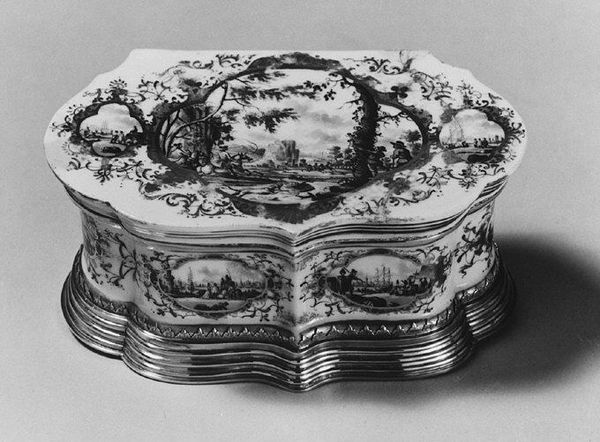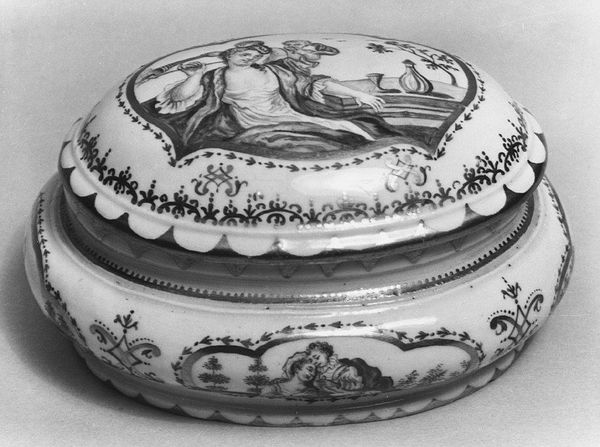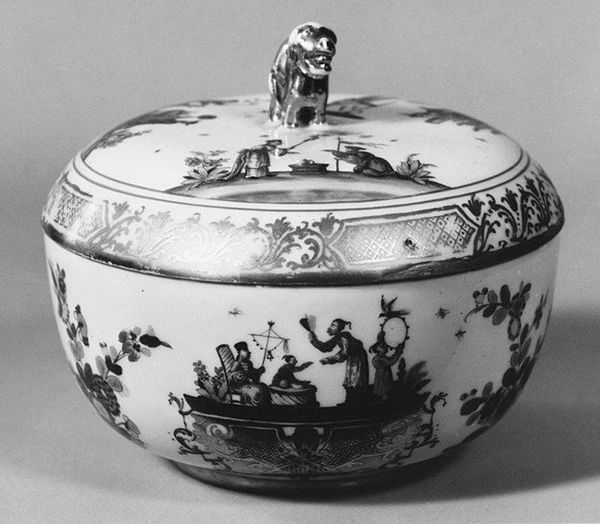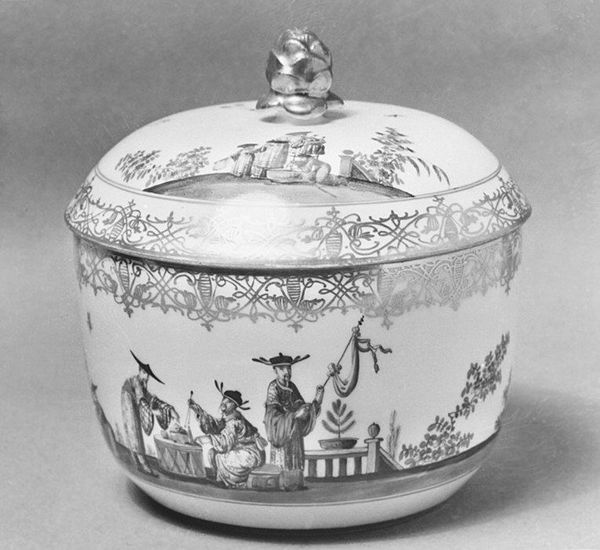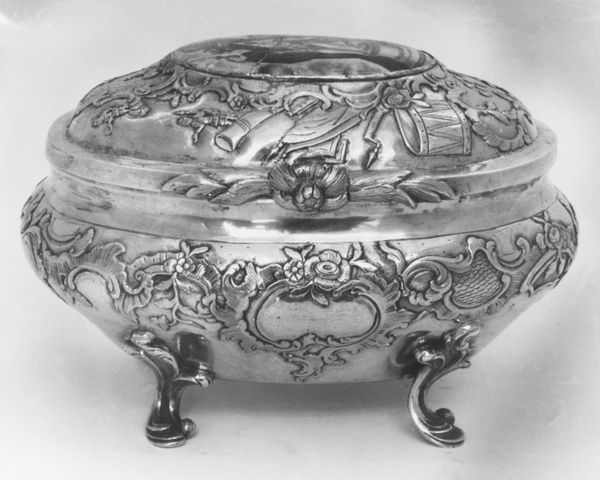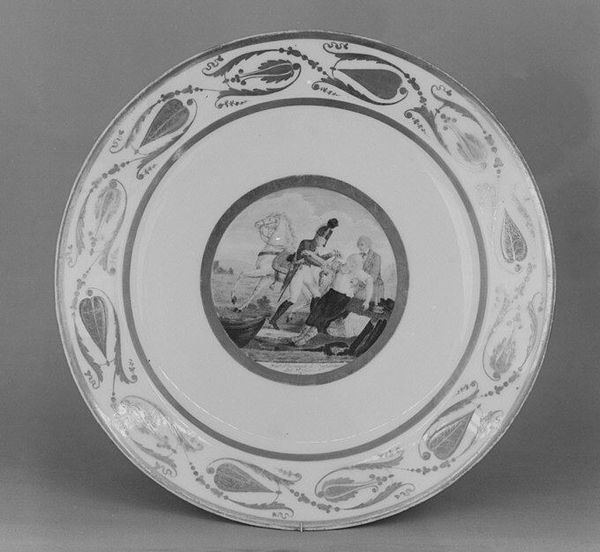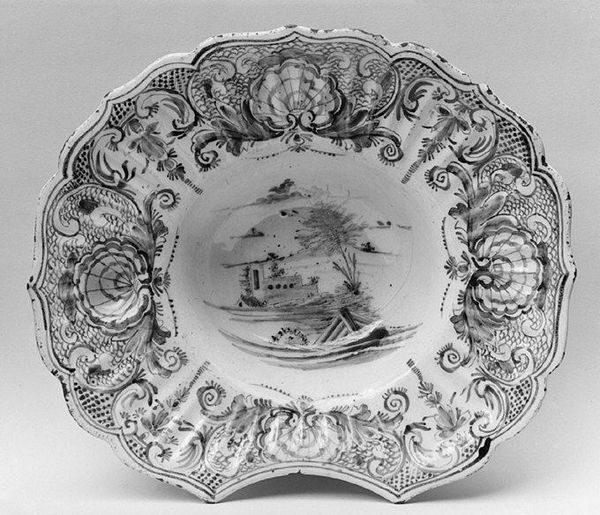
ceramic, porcelain, sculpture
#
landscape
#
ceramic
#
porcelain
#
figuration
#
sculpture
#
decorative-art
#
rococo
Dimensions: Overall: 2 3/4 × 4 in. (7 × 10.2 cm)
Copyright: Public Domain
Curator: The Metropolitan Museum of Art holds this elegant porcelain butter dish with a cover, crafted by the Meissen Manufactory between 1735 and 1745. Editor: The monochrome scheme and the shape of this container give it an oddly serene quality. A sort of neoclassical landscape with playful hints of the Rococo. It feels both decorative and somehow functional. Curator: Rococo sensibilities absolutely prevailed, as Meissen, patronized by the Saxon court, led the revival of porcelain production in Europe during this period. These refined tablewares allowed the privileged to stage their courtly culture through very material gestures. Editor: Indeed, consider the iconography: romantic vignettes of pastoral leisure, each panel telling some unseen narrative of the wealthy class enjoying a park setting, their wealth secured through invisible means. What meanings were conveyed by these scenes? Curator: It's key to remember how heavily these images drew from the *gôut pittoresque* of the French court, where similar representations worked to actively sanitize labor and empire for consumers. So, rather than finding pleasure within reach for all, the work actually reaffirms societal stratifications, don't you agree? Editor: Absolutely. While this recalls *chinoiserie*, with landscapes from afar turned into mere decor, here, scenes of Western luxury become aesthetic objects on their own. Are those tiny insects included to show its verisimilitude to nature or perhaps even represent death in disguise? Curator: Those tiny bugs remind me that beauty exists precariously and it does for everyone. Yet the question persists for whom does its aesthetic serve? What is the ultimate impact of the representation, and what is actively suppressed? Editor: It does provide a great lesson that things are not always how they appear, despite how refined its surface might be. Thank you for shedding light on it, allowing us to understand its context beyond the surface, to challenge our assumptions about art, utility, and design. Curator: My pleasure, thank you for highlighting how symbols, sometimes taken for granted, act as reminders and continue speaking through time.
Comments
No comments
Be the first to comment and join the conversation on the ultimate creative platform.
